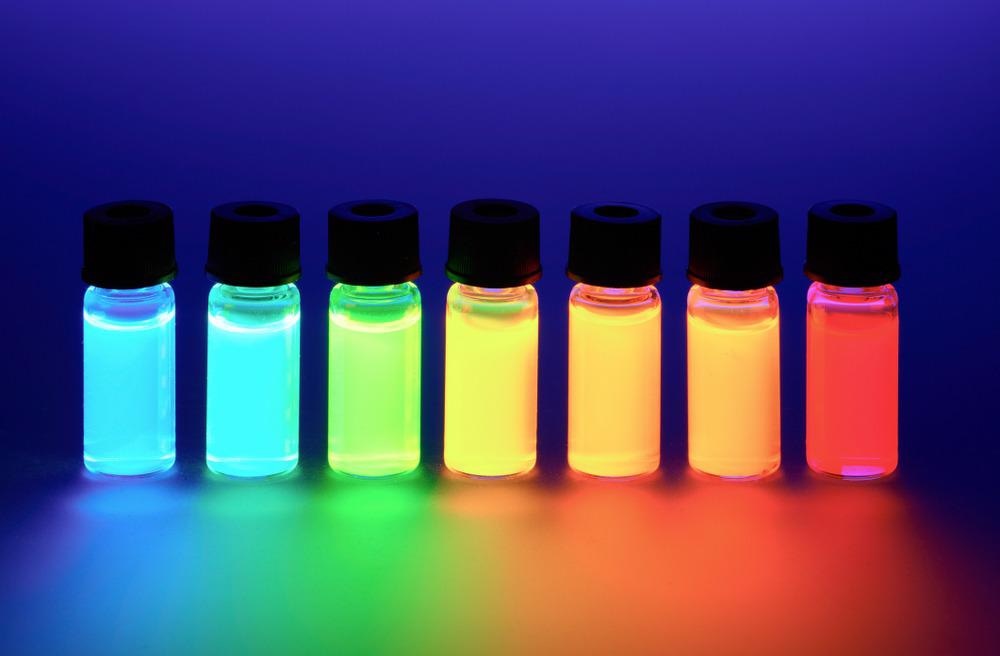Photochemistry is the science that studies the transformations induced by the absorption of light. If excited by a photon of suitable energy, a molecule can lead to a range of reactions such as photoisomerizations, photocycloadditions, and photocyclizations.

Image Credit: Denis Larkin/Shutterstock.com
Light consists of photons, discrete packets of energy that can be emitted or absorbed. Radiation is typically in the ultraviolet, visible, and infrared regions. Based on photochemistry, there are two fundamental laws.
Firstly, “only radiation that is absorbed by a molecule can produce a photochemical change in that molecule”. This is known as the Grotthuss-Draper law. Secondly, “for each photon of light absorbed by a chemical system, only one molecule is activated for its subsequent reaction” (Stark-Einstein law).
Photochemistry has been known since the beginning of the 20th century. The first experiments date back to the early 1900s, by Giacomo Giamician, an Italian chemist. A key requirement is that the absorption spectrum of the target molecule needs to match the optical window of the light source.
Initially, the principal light source was the sun. However, it is difficult to have control over the energy and intensity of sunlight, and therefore it is hardly used as a light source nowadays.
Lasers have revolutionized the world of photochemistry with their ability to emit light with a narrow wavelength spectrum. Light-emitting diodes (LEDs) are other useful light sources.
The introduction of fast flash techniques that work in a time scale of microseconds (µs, 10-6 s) up to femtoseconds (fs, 10-15 s), allows the investigation of the photochemical behavior of chemical species. In particular, femtosecond techniques can provide valuable information about the formation of intermediates in a chemical reaction.
Fields of application
Photochemical processes can be both naturally occurring, with photosynthesis in plants being the most famous example, and human-made. This second category includes phenomena such as the conversion of solar radiation into thermal or electrical energy, the synthesis of organic or inorganic compounds, and photo processes of pharmacological and medical nature.
Very common applications of photochemistry are in polymer chemistry, with radiation-induced polymerizations for the preparation of polymeric materials; the preparation of nanoparticles of predefined size and shape (i.e., quantum dots); the formulation of photo stabilizers and skin-protective lotions and creams in cosmetics.
Photochemical processes can be investigated with the aid of spectroscopic techniques, such as absorption, fluorescence, phosphorescence, ultraviolet, and infrared spectroscopies, to name a few.
With fluorescence spectroscopy, it is possible to investigate the photochemical processes of organic compounds. Emission spectroscopy is used to study the photolysis – separation of molecules by the action of light – of compounds in polar and non-polar solvents. It is also possible to get information on the molecular structure and characteristics of analytes, as well as the reaction mechanisms.
Applications of photochemistry in the biomedical field
In the last decades, there was increasing interest in the application of photochemistry in the biomedical field, especially in biomaterials and tissue engineering. An example is the discovery of photodynamic therapy (PDT) for the treatment of cancer.
PDT is an alternative cancer treatment and it is probably the most established biomedical application of photochemistry. PDT uses a photosensitizer and light, and the subsequent photochemical reactions, to kill cancer cells, for instance in skin malignancies.
Photochemistry also finds application in molecular biology, with photochemical crosslinking for studying protein-nucleic acid interactions. Specific binding between proteins and gene sequences at specific binding sites can be fixed (or frozen) by photochemical crosslinking using a UV light source, and can then be subsequently analyzed.
Another biomedical application of photochemistry is photochemical tissue bonding (PTB). The technique allows the bonding of tissue edges or surfaces together. PTB is a rapid and controlled technique. In the past few years, its feasibility and safety for repairing skin, cornea, or tendon tissues have been demonstrated.
A key advantage is the well-defined penetration depth of the lasers used in PTB. For instance, an argon laser with a wavelength of 514 nm can effectively penetrate skin and tendon tissues up to 350 and 680 microns (μm, 10-6 m) respectively. This is important information for the determination of the maximal thickness of tissues that can be effectively bonded.
Converting sunlight into energy
One of the most investigated and fastest-growing applications of photochemistry is in the harvesting and conversion of sunlight into electric energy. Research on solar energy conversion is making rapid progress, not only in academia but also in the commercial sector, with increasing interest in the development of photovoltaic solar cells.
Initial devices were based on crystalline silicon, where light absorption leads directly to the generation of free conduction band electrons and valence band holes. Nowadays the interest is shifting towards molecular or polymer-based semi-conductors, which have the potential of using low-cost materials and fabrication techniques.
The most established devices of this kind are the dye-sensitized solar cells (DSSCs), which consist of a monolayer of molecular light absorbers (bearing carboxylic, phosphoric, or boronic acid functional groups) on high surface area electrodes based on nanocrystalline, mesoporous metal oxides (e.g., titanium oxide, TiO2).
However, currently, the efficiencies of molecular and polymer-based solar cells are still modest compared to their silicon-based equivalents. DSSCs using optimized material and structural properties can reach up to 12% efficiency. This is still less than the silicon-based solar cells, which can achieve 20–30% efficiency.
Therefore, much research is still needed before DSSCs can effectively compete with silicon devices for large-scale solar energy conversion and subsequent commercialization.
Sources:
- Šima, J. (2017). Photochemistry — development, and achievements. Acta Chimica Slovaca, 10, 84-90.10.1515/acs-2017-0015
- Liu, S., Kokot, S. & Will, G. (2009). Photochemistry and chemometrics—An overview. Journal of Photochemistry and Photobiology C: Photochemistry Reviews, 10, 159-172.10.1016/j.jphotochemrev.2010.01.001
- Chan, B. P. (2010). Biomedical applications of photochemistry. Tissue Eng Part B Rev, 16, 509-22.10.1089/ten.TEB.2009.0797
- Durrant, J. R., Haque, S. A. & Palomares, E. (2006). Photochemical energy conversion: from molecular dyads to solar cells. Chem Commun (Camb), 3279-89.10.1039/b601785c
Further Reading
Last Updated: Nov 30, 2021